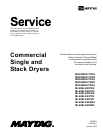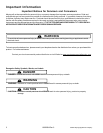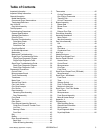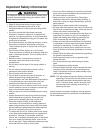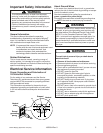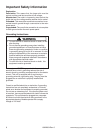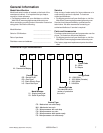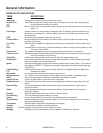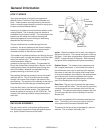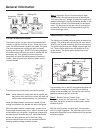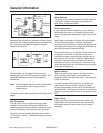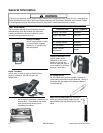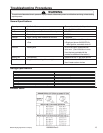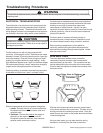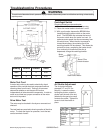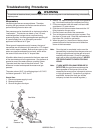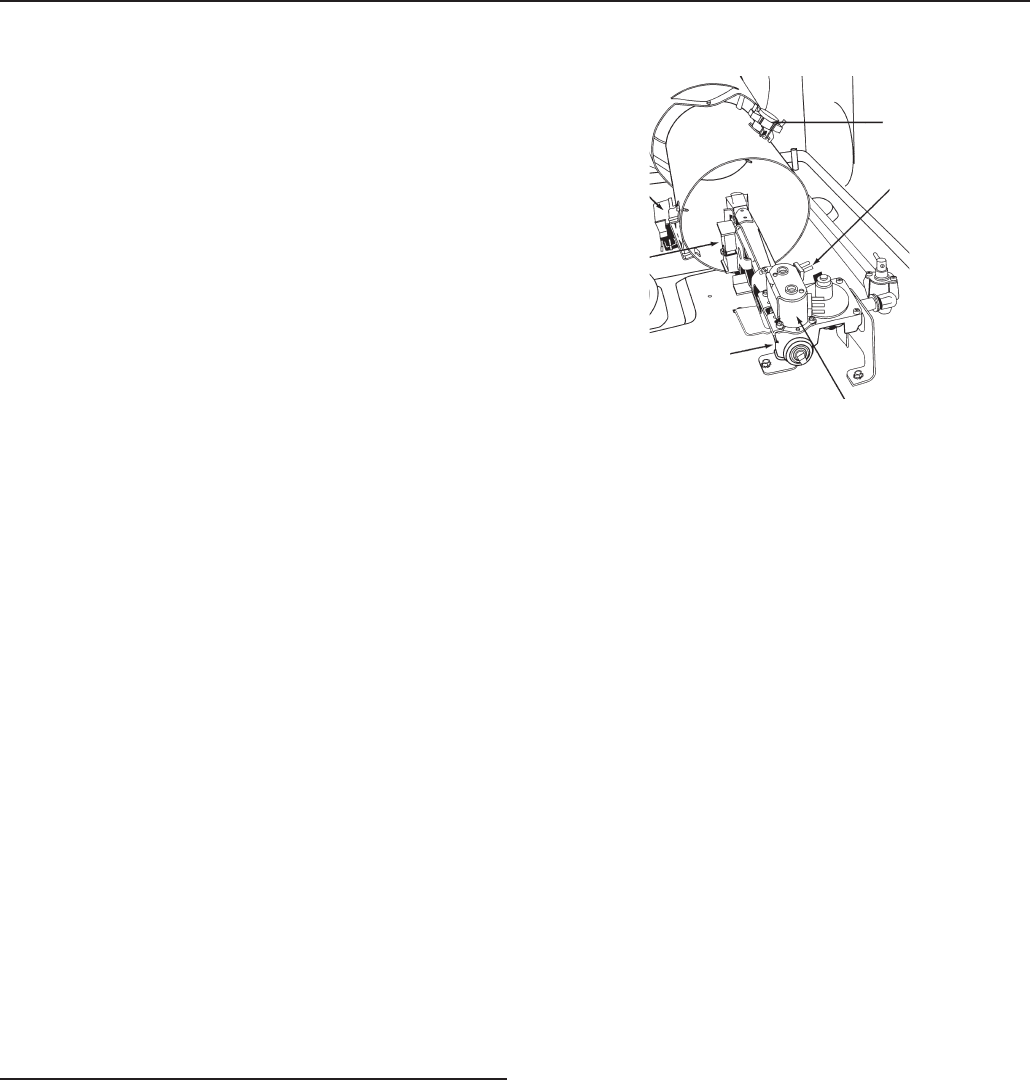
©2004 Maytag Appliances Company 1602904 Rev. 0 9
General Information
Igniter - When the controls call for heat, line voltage is
applied to the igniter. This causes the igniter to heat up
and glow. It can reach a temperature of approximately
2200º F in approximately 30 seconds. Gas contacting
the igniter at this temperature will ignite immediately.
Radiant Sensor - The radiant sensor operates much
like a regular thermostat. It is mounted to the side of
the combustion cone over an opening which exposes
the sensor to the heat of the igniter and burner flame.
In its normal condition, the contacts in the radiant sensor
are closed and the circuit is completed to the igniter.
The igniter glow causes the radiant sensor contacts to
open, thus breaking the circuit to the igniter.
Gas Valve - The gas valve is actually two gas valves,
one in series with the other. The first valve is opened by
a solenoid which has two separate coils built into one
solenoid. This solenoid uses what is termed a split coil.
The coils are referred to as the Holding Coil and the
Booster Coil.
Both coils are needed to lift the armature and open the
valve. The holding coil is strong enough to keep the
valve open once the armature has been lifted.
The second of the two valves is operated by a one-coil
solenoid. This is called a Secondary Coil.
Hi-limit
Thermostat
Holding &
Booster Coil
Gas Valve
Radiant
Sensor
Igniter
Secondary
Coil
GAS VALVE ASSEMBLY
The gas controls utilize a hot surface ignition system.
The three major components of the gas ignition system
are: Igniter, Radiant Sensor and Gas Valve.
HOW IT WORKS
The cycles are made up of three basic operations.
White & Colors, Permanent Press and Delicates and
Knits. These operation are sequenced by the controls
(timer or microprocessor board) to provide a drying cycle
for each of several different fabrics.
Incoming air is pulled over and around the exterior of the
rotating tumbler. The air passing over the tumbler is
preheated from the warm tumbler. This incoming air also
passes over the inside of the cabinet lowering the
cabinets temperature and minimizing the heat being
dispelled into the laundry area.
The pre-conditioned air is pulled through the heat
enclosure. As the air passes over the flame or heating
element, it is heated causing the air to expand which
increases its ability to absorb more moisture.
The heated air is pulled up the stack and through the grid
in the tumbler back, through the tumbler, and to the lower
area of the tumbler front. The tumbler is rotating in a
clockwise direction lifting the
garments to the top of the tumbler. The garments fall
free of the clothes lifters through the air stream. As this
tumbling takes place, the garments keep turning over
within the tumbler. Moisture is evaporated from the
garments tumbling in the warm, dry air.
After passing through the garments, the air will contain
moisture and lint. This air is pulled from the tumbler
through a fine mesh filter located in the bottom of the
door opening. The quantity of lint collected on the filter is
dependent upon the size and type of load being dried.
From the filter, the air is pulled into the exhaust blower
and forced out the exhaust system. The high speed
blower is capable of moving up to 220 CFM of air. The
volume of the tumbling chamber is approximately 6.0
cubic feet.



